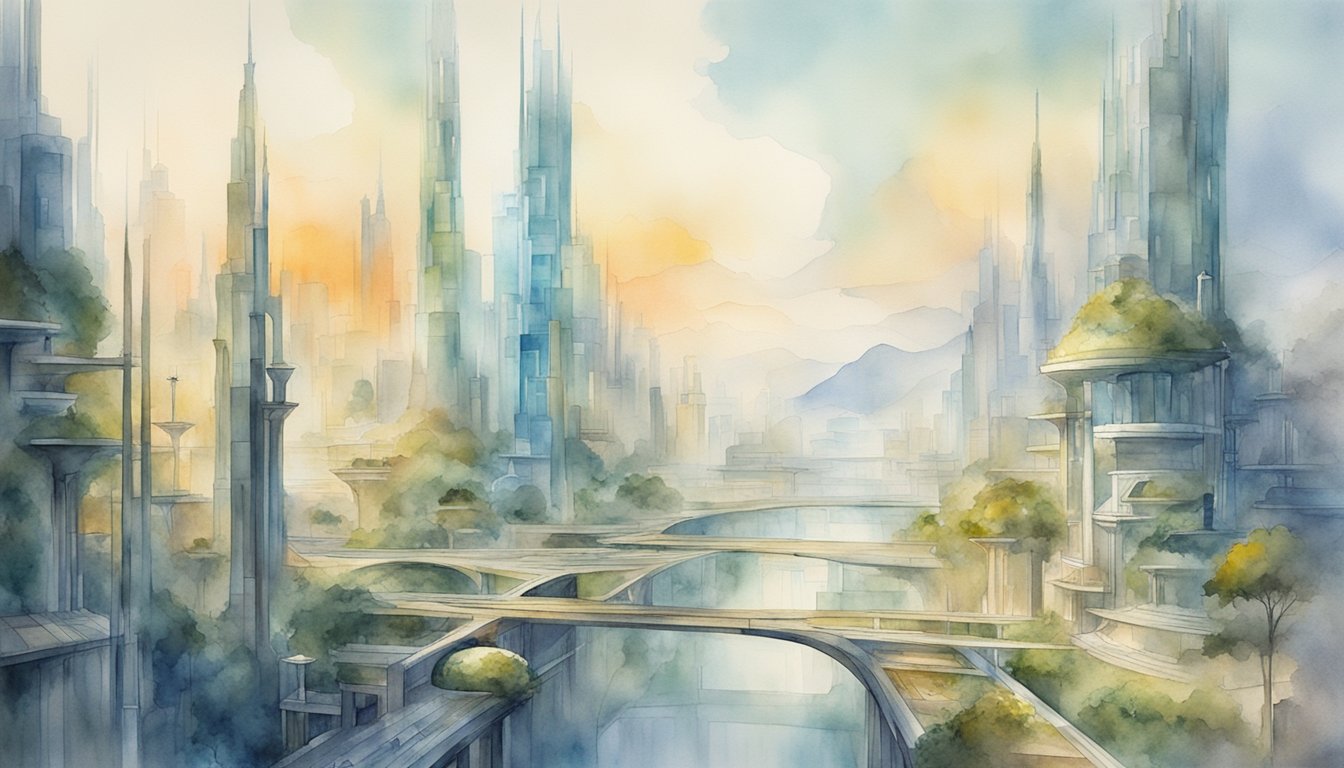The Science of Human Evolution
Understanding human evolution is fundamental to grasping how modern Homo sapiens have developed over time through genetic mutations and natural selection processes.
Darwin’s Theory in Modern Context
Charles Darwin revolutionized the way we comprehend the natural world with his work “On the Origin of Species”.
He introduced natural selection as the mechanism by which species, including humans, adapt to their environment and survive.
Today, Darwin’s principles remain key to explaining the persistent evolution of modern humans.
Studies reveal that humans continue to evolve, as changes in our environment and the pressures of natural selection never cease.
Thus, the journey of Homo sapiens is far from stationary, with the human genome still revealing new complexities.
Genetic Mutations and Variations
Genetic mutations are random changes in the DNA sequence that can be beneficial, harmful, or neutral to an organism.
These mutations add to the genetic variation within a population, which, under the influence of natural selection, can lead to evolutionary change.
Pieces of evidence underscore the ongoing evolution in humans, especially in how human immune systems continue adapting to various pathogens.
Reproduction is another mechanism facilitating genetic mutations, as the combination of genes from two parents produces unique offspring, potentially giving rise to advantageous traits that may flourish in subsequent generations.
How Our Environment Shapes Us

As humans navigate life on Earth, the ecosystems and societies they interact with can significantly influence their genetic makeup.
Here’s how dietary patterns and diseases, along with cultural practices, play a role in shaping human evolution.
Adaptations to Diet and Disease
Humans have adapted to various diets and diseases in remarkable ways.
For example, the lactase persistence trait has evolved in populations that have a long history of cattle domestication and milk consumption.
This trait allows individuals to continue consuming milk into adulthood without facing the challenges of being lactose intolerant.
In contrast, populations not traditionally dependent on milk often lack this trait, leading to a higher prevalence of lactose intolerance.
Another aspect of human health intricately linked to environment is the resistance to certain diseases.
Over time, human populations have developed genetic resistances to various local diseases, which can be traced back to historic exposure to those diseases.
For instance, the sickle cell trait provides resistance to malaria and is found more frequently in regions where malaria is or was once prevalent.
Cultural Influences on Genetic Selection
Culture profoundly affects genetic evolution by influencing which traits are deemed favorable.
An intriguing example is the average height of Dutch men, which has increased significantly and has been attributed to a diet rich in dairy and meat in combination with a culture that values tall stature.
Cultural practices also shape human genetic selection in more direct ways.
Matrimonial patterns, for example, can lead to a gene pool that may prioritize certain traits over others due to societal standards.
These choices can even influence the prevalence of genes within a population, illustrating that culture and genetics are interwoven in the tapestry of human evolution.
The Future of Human Evolution

The journey of human evolution is an ever-evolving story, shaped by the forces of nature and now increasingly by technology.
As we gaze into the possibilities, two key elements stand out: the avenue of advancements and how we anticipate our evolutionary trajectory.
Technological Impact on Natural Selection
With the rise of medical technology, humans are experiencing a shift in the natural selection process.
As scientists explore this interplay, it’s evident that innovations in healthcare are allowing a greater proportion of individuals to survive and pass on their genes.
This change could lead to a decrease in genetic diversity as the selection pressures that once removed certain genes from the pool are no longer as effective.
On a genetic level, the prevalence of interventions to correct DNA mutations could alter the future path of human evolution.
Advancements:
- Organ transplants
- Genetic engineering
- Prenatal care improvements
Influences on Natural Selection:
- Increased survival rates
- Alteration of genetic drift
- Shifts in reproductive patterns
Predicting the Path of Evolution
The attempt to predict the path of evolution often feels like gazing into a crystal ball due to its complexity and the number of variables involved. Geneticists and evolutionary biologists use data from the study of early humans like Homo heidelbergensis and current population studies in Asia and Europe to track patterns and mutations.
These studies suggest that microevolution is continuously shaping human diversity.
The introduction of new technologies, alongside climatic and environmental changes, ensures that populations will keep evolving, but the exact changes are both exciting and challenging to forecast.
Patterns Observed:
- Increased tolerance to diverse diets in Europeans
- Genetic adaptation to high altitude in Asian populations
Considerations for Prediction:
- Imminent environmental changes
- Interplay between genetic makeup and future lifestyles
Variation remains a cornerstone of genetics, and as humanity marches forward, the tapestry of human evolution will undoubtedly become more intricate.
Whether through a subtle mutation or a significant shift due to genetic drift, the certainty of evolution is that it does not stagnate.

